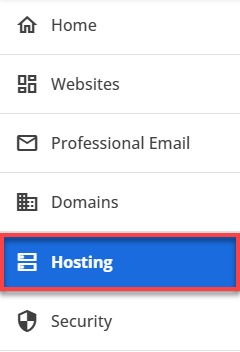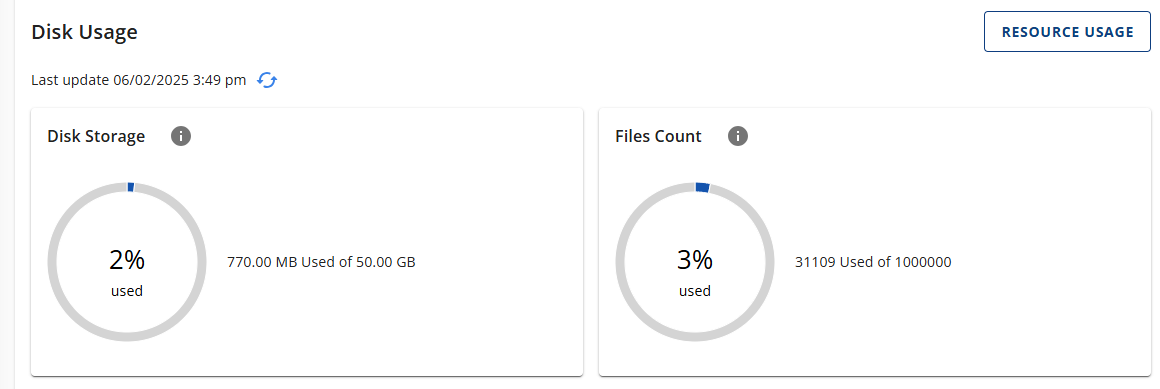How to Check Disk Usage and File Count in Account Manager
Keeping track of your disk space and file count is essential for maintaining optimal performance and avoiding storage-related issues in your Bluehost hosting environment. This guide provides a quick walkthrough to help you locate and understand these metrics.
Locating Disk Usage Information
- Log in to your Bluehost Account Manager.
- Click Hosting in the left menu.

- If you have a single hosting package in your account, you'll be redirected to the management page immediately.
- If you have multiple hosting packages, find the one you want to manage and click the MANAGE button.

- Scroll down the page until you find the Disk Usage section.
- The Disk Usage section displays the following key metrics:

- Disk Usage: This shows the total disk space your hosting plan is currently utilizing.
- File Count: This indicates the total number of files stored in your hosting plan.
Why Monitoring Disk Usage Matters
Regularly checking your Bluehost disk usage and file count helps you:
- Avoid exceeding storage limits
- Prevent performance issues
- Maintain a clean and efficient hosting environment
- Plan for upgrades or cleanups proactively
Summary
Monitoring your Bluehost disk usage and file count is a simple yet powerful way to ensure your hosting environment remains healthy and efficient. Following the steps above, you can avoid potential issues and keep your website running smoothly.
If you need further assistance, feel free to contact us via Chat or Phone:
- Chat Support - While on our website, you should see a CHAT bubble in the bottom right-hand corner of the page. Click anywhere on the bubble to begin a chat session.
- Phone Support -
- US: 888-401-4678
- International: +1 801-765-9400
You may also refer to our Knowledge Base articles to help answer common questions and guide you through various setup, configuration, and troubleshooting steps.